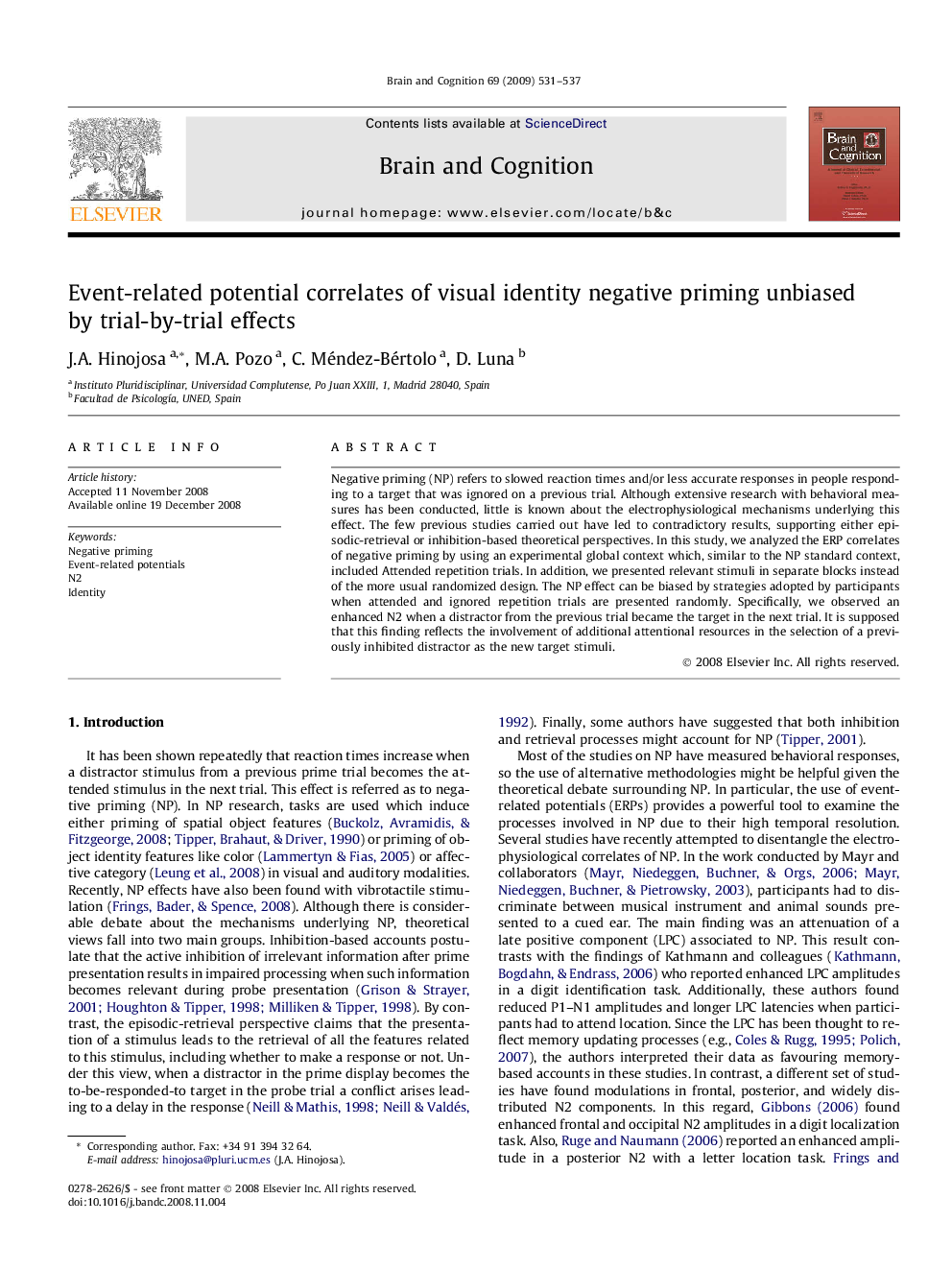| Article ID | Journal | Published Year | Pages | File Type |
|---|---|---|---|---|
| 924488 | Brain and Cognition | 2009 | 7 Pages |
Negative priming (NP) refers to slowed reaction times and/or less accurate responses in people responding to a target that was ignored on a previous trial. Although extensive research with behavioral measures has been conducted, little is known about the electrophysiological mechanisms underlying this effect. The few previous studies carried out have led to contradictory results, supporting either episodic-retrieval or inhibition-based theoretical perspectives. In this study, we analyzed the ERP correlates of negative priming by using an experimental global context which, similar to the NP standard context, included Attended repetition trials. In addition, we presented relevant stimuli in separate blocks instead of the more usual randomized design. The NP effect can be biased by strategies adopted by participants when attended and ignored repetition trials are presented randomly. Specifically, we observed an enhanced N2 when a distractor from the previous trial became the target in the next trial. It is supposed that this finding reflects the involvement of additional attentional resources in the selection of a previously inhibited distractor as the new target stimuli.
